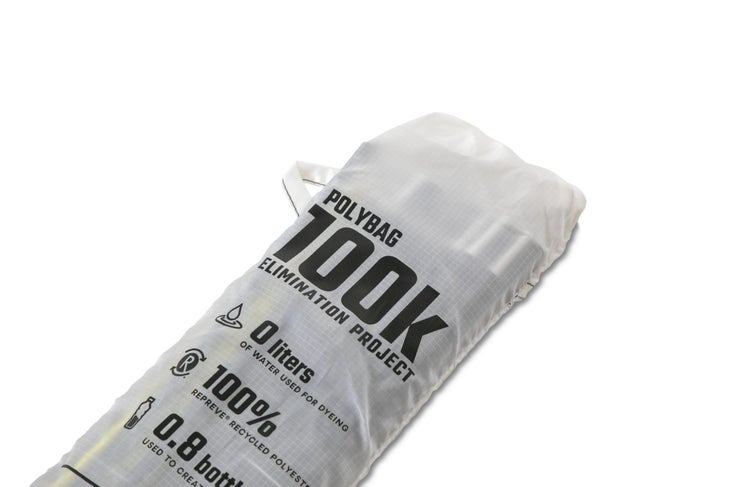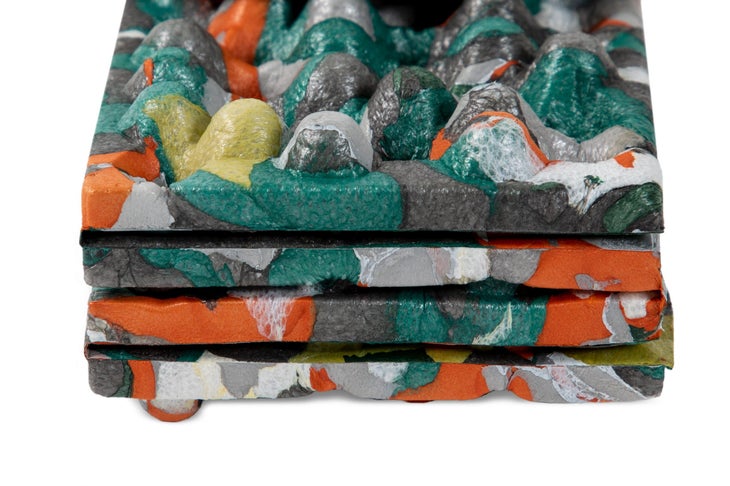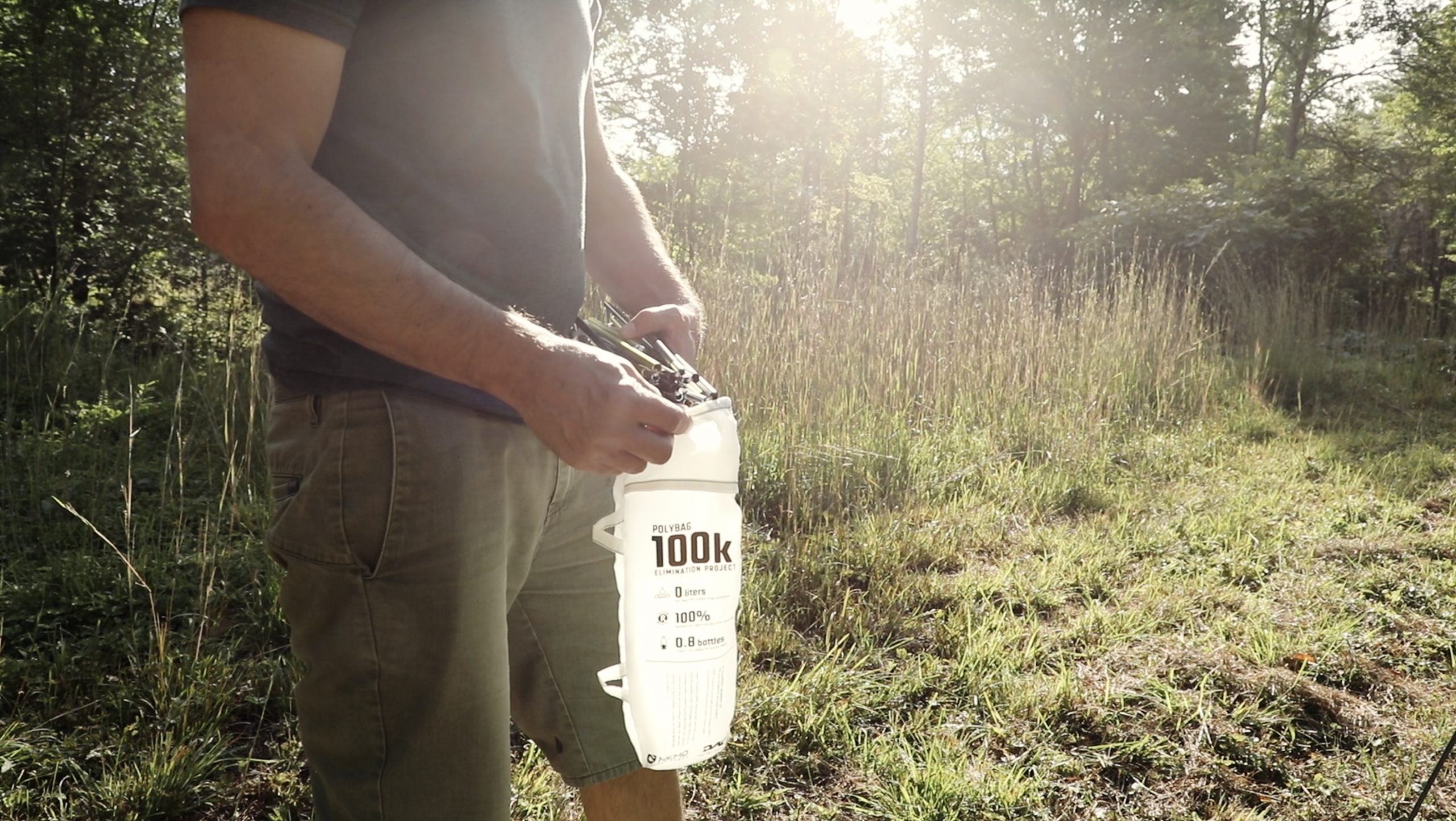Nemo’s journey to eliminate polybags began in 2019, on the floor of a distribution warehouse in Riverside, California.
Theresa Conn, the camping gear company’s global distribution and sustainability manager, had been called to the warehouse to look over a “transportation packaging audit.” With a handful of coworkers, Conn pulled boxes of items off shelves at random and looked inside. She was surprised to find vast inconsistencies: plastic banding was being used on lightweight boxes that didn’t require it, and polybags encased tents that had been safely shipped without them for years. Across the board, there was just too much waste.
“It was really eye-opening,” Conn said. “We thought, ‘If we’ve been shipping some products without polybags, and it’s been fine, why are we using [polybags] at all?’”
The realization sparked Nemo’s desire to get rid of polybags, culminating in the company’s latest plastic-removal initiative, the 100K Polybag Elimination Project. Starting in 2019, Nemo phased polybags out of the shipping process for all items except for its sleeping bags, which are at higher risk of moisture damage and require total protection from the elements. The program sets a “new transportation packaging standard” for the company, says Conn.
NEMO takes aim at polybags
Once the audit revealed that Nemo’s tents and other gear could be safely shipped without polybags, eliminating the outer bags was a no-brainer. It saved time (Nemo wouldn’t have to open the bags and remove the products before sending them to customers), money (15 to 20 cents per unit), and significantly slashed plastic waste in its supply chain. In 2020, Conn estimated Nemo saved one ton of plastic on its best-selling tent, the Hornet 2-Person, alone.

After doing away with the outer bags, Nemo set its sights on the inside of the tent roll. A polybag still encased each tent’s poles when the company received them from its supplier, South Korea-based Dac���ʴDZ���. Nemo coordinated back and forth with the manufacturer, challenging Dac to reimagine its own packaging.
“It was an uphill battle,” Conn said. “Dac is a huge supplier, and we’re getting bigger, but we’re not The North Face.”
For Nemo’s 2021 tent line, the partners landed on a solution: an undyed, uncoated pole bag made from Repreve fiber, a fabric crafted from recycled water bottles. This bag specifically is what inspired the 100K Polybag project name, as the bag will save Nemo 100,000 polybags over the first two years of the initiative. The project netted Nemo a Green Good Design 2021 award for Green Product.
The benefits to the initiative don’t begin and end with Nemo, though. Throughout the process of developing the new bag, Dac and Nemo tested methods of shipping tent poles, and found that in the vast majority of situations, polybags were unnecessary. Starting in July 2021, Dac will ship tent poles to certain partners without polybags.
Nemo was part of Dac’s first cohort to receive poles without polybags, along with sunshade maker Shibumi and tent manufacturers Hilleberg and Helsport. Currently, Dac is testing the program with Big Agnes and REI, with hopes to expand it to all of its partners—more than 40 companies including giants like The North Face and Mountain Hardwear.��
Nemo’s sustainable future
With single-use plastic polybags eliminated from Nemo’s tents, chairs and accessories, the company is setting its sights on solutions for its sleeping bags. Because most of its bags are down-filled, shipping them without any sort of moisture protection runs the risk of significant product damage.��
“Right now, we have emails bouncing around at Nemo about better ways to handle polybags for our sleeping bags,” Conn said.
At this point, the company is aiming to use polybags that contain recycled plastic and are recyclable, but Conn noted that a number of solutions are on the table. For the individual sleeping bags, Nemo is exploring options from compostable PLA bags—biodegradable bags made from plant compounds—to stone resin packaging, a waterproof cardboard substitute made by mixing resin with calcium carbonate. Additionally, the company is currently testing a shipping system that uses one master carton polybag instead of individual bags for sleeping bags, with hopes to implement the practice in 2022.

Conn also highlighted the importance of varied sustainability initiatives, including projects focused on emissions reduction and materials waste. She cited a 2016 Quantis/Textile Exchange Apparel CO2 footprint study which found that 98 percent of greenhouse gas emissions are created prior to product distribution; this stark picture of waste led Nemo to create the Chipper, a sitting pad made from recycled foam that—just over the past year—saved 8.8 tons of foam waste and 48 tons of CO2 emissions from foam incineration.
A major portion of Conn’s focus remains on emissions, but the plastic-focused initiatives NemoNemo has implemented over the past two years have demonstrated sustainability success.
“I think [reducing plastic waste] is an awesome entry point into sustainability for any brand,” Conn said. “The goal is to eliminate, eliminate, eliminate.”


